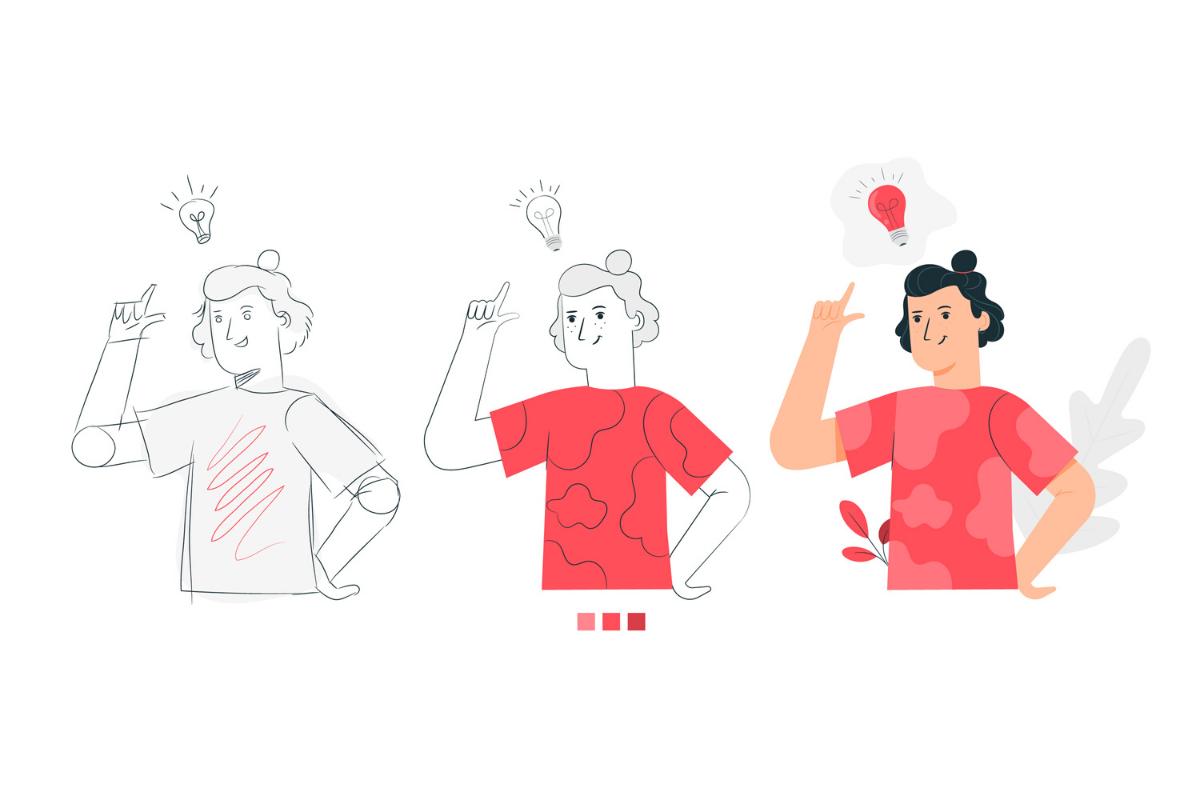Design thinking finds its basis in the common-sense-based, goal-oriented tenets of planning and execution that have driven business propositions since time immemorial. It is a concept first taught at Stanford University to harness creativity in the 1980s and 1990s. Since that time, it has been adapted to business scenarios to refine the innovation management process and keep it relevant to contemporary times.
Design thinking quite simply seeks to address the needs of the users of a system by creative, often recursive problem-solving until the designers find an ideal solution.
That said, design thinking is not exclusive to designers, or only artsy individuals. The design thinking model comprises using the innovation funnel in a deliberate and systematic fashion so that it leads to the improvement of processes as well as results. It has come to be used as a practical tool within social technology that keeps both the process and the outcomes in scope.
Take the context of the marketing function of a business. One often hears the words ‘brainstorming’ or ‘ideating’ thrown around. The need for innovation is an apparent and imminent one, and this is why all members in the hierarchy in sales and marketing are routinely called upon for innovative ideas. Design thinking creates a sensible, if slightly ruthless, framework through which viable ideas can be filtered. This way, less time is wasted on the non-profitable ones.
You might also be interested to read: Creative Thinking Ensures Great Employee Experience For Your Workforce
Why is the innovation management process so important?
It is because corporations and individual entrepreneurs alike have found out that the bigger challenge is to come up with ideas. Finding the most promising ones among them to invest in is comparatively easier.
Change is the new constant. The business environment of today evolves more rapidly when compared to only a couple of decades before. Sifting the innovation process dramatically to ensure that it stays current in such a changeful environment requires many tries.
In keeping with the requirements of continuous improvement, design thinking allows the design innovation process to be refined through incremental, outcome-backed steps to create a systematized flow. Companies that adopt the design thinking approach see a reduction in the importance of the vertical hierarchy. The contributor with the best ideas and track-record of execution is the prima facie leader. Companies now employ a Chief Design Officer or an Innovation Leader to carry out design thinking in its repetitive, iterative method which is at the base of the design thinking methodology.
A streamlined innovation process is essential for both startups and established players
This starts with the initial step of getting into the skin of the end-user. It helps to define a problem statement that stays relevant in a highly dynamic environment. Teams of designers work with a Chief Design Officer to come up with prototypes and test them for fit in the context of the present. They also seek to make them relevant to the future and constantly come up with scenarios for troubleshooting so that rapid crusades of development don’t make them obsolete.
Large corporations and startups march side-by-side in reaping the rewards of a design thinking approach. A marker of performance of those companies that adopt design thinking applications through initiatives such as the design innovation center is their performance in the open market as well as that of their stock. They command loyalty and repeat patronage.
At the agency level and among design thinking-led corporations, digitization is a formidable challenge. But the use of design thinking and design innovation applied in stages can help garner the best results for corporations both young and old. Some of the top players in this space are Quicksand in Bangalore, Pune-based Turian Labs, and Bangalore-based Moonraft Innovation labs. Turian Labs claims that they are able to help companies such as Tech Mahindra refurbish and prepare for big changes in their leadership and brand promotion methods.
You might also be interested to read: Designing Employee Experience – Everything HR Needs To Know
References:
- Anubhav Gupta, How design thinking can help companies, Forbes India, 22nd July 2019
- Rikke Friis Dam and Yu Siang Teo, What is Design Thinking and Why Is It So Popular?, Interaction Design Foundation, January 2020
- Rikke Friis Dam and Yu Siang Teo, 5 Stages in the Design Thinking Process, Interaction Design Foundation, February 2020
Related Topics:






